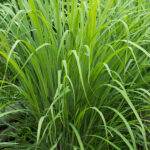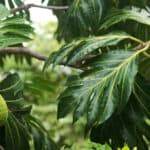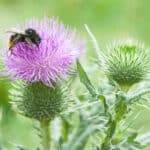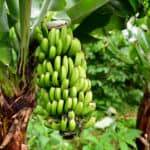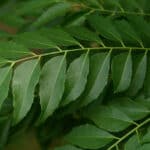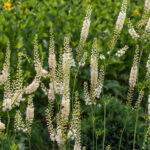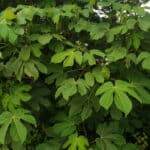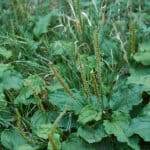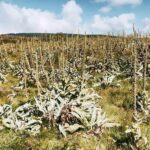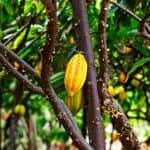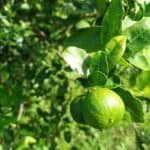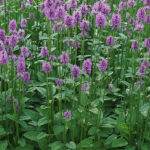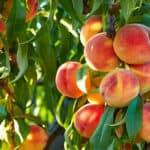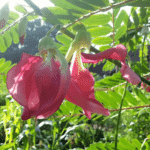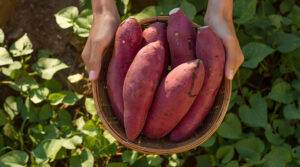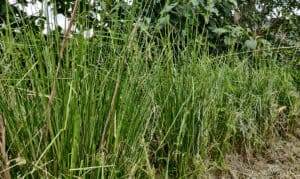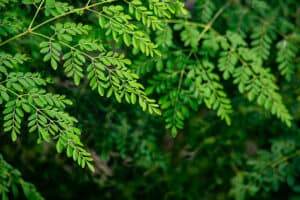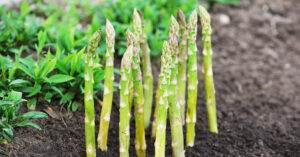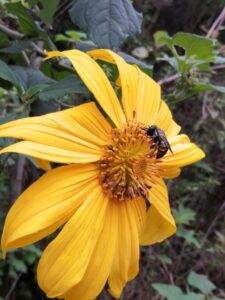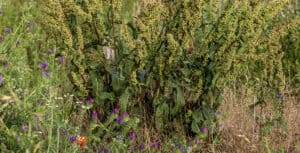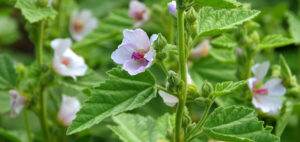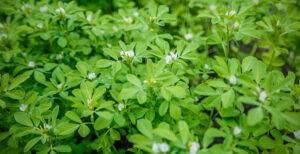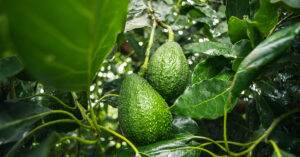Introduction
The arrival of freshly picked apples is one of the surest signs that fall has arrived. Throughout most regions of the country, apples are grown in abundance. They’re an indispensable fruit, valued for their prolific production and health properties, yet can’t be overlooked as a historical and cultural symbol tied to love, beauty, knowledge, desire, sin, and immortality.
Apples are a staple fruit all around the world because of their versatility and good-keeping qualities. Batches of applesauce can be enjoyed fresh or canned, remaining viable for well over a year.
Pressed into fresh cider, the intensified apple flavor is enjoyed in the form of a favorite fall beverage. Left to ferment, the smashed apple juice will ferment, transforming into a delicious hard beverage, or an amazing health elixir, apple cider vinegar. Raw apples are a favorite snack for folks of all ages, an obvious choice to take on the go, or as an addition to a smoothie, salad or fruit and cheese plate.
They can be dehydrated easily. The sweet and tart essence is concentrated and the apples turn into delicious, crisps. The fruit even stays edible and tasty left in the fridge through the winter months. Is there anything this iconic fruit can’t do?
August through October are peak times to pop into a local orchard and pick a few pecks of fall fruit. No autumn would be complete without wandering through rows of trees dotted brightly with fresh fruit. It’s all so rustic and aesthetically pleasing.
With the multitude of varieties cultivated these days, there’s a flavor, color and size to please all tastes. The season that begins in the long days of fading summer heat closes by bringing crisp, cool weather and quickly shortening days.
Once established, apple trees require little annual maintenance and are a joy to observe as they grow and develop year after year. If the climate and variety is right, the addition of this crop to your landscape will produce a practical plethora of fruit for many generations.
With proper planting and maintenance practices, apple trees will give exponentially more than what is required to care for them.
History & Origin of the Modern-Day Apple
The genus and species, Malus domestica, includes nearly all of the common varieties of apples that we cultivate and consume today. Apples belong to the Rosaceae family and are closely related to other pome fruits, like pears and quinces.
Apples have been a part of the human diet since ancient times. From mythological and biblical references to anthropological discoveries, the apple has played a major role in the unfolding of world history. This ubiquitous fruit has been cultivated for 10,000 years or more. DNA records indicate the original ancestor of the beloved apple as we know it today was ‘Malus sieversii’.
The wild fruit is still grown today in its original region of Central Asia, in the mountains of Kazakhstan. In this area it was cultivated widely and then traveled along the silk road, over time becoming a prominent crop in Europe.
During the Roman conquest of Britain in the first century BCE, apples and the knowledge concerning their production and value as a staple fruit crop, were brought with them. The French learned the exceptional skills of apple cultivation and processing from the Romans.
Many varieties of apple were established in England during medieval times, but the prosperity of apple production was severely diminished during the years of the plague.
Native crabapples predated the arrival of the domesticated type from Europe in the 1600’s. This small, wild version, however, was not edible. Apple seeds and cuttings were brought over to Massachusetts by English colonists. Apple rootstocks arrived in Virginia and spread through the American Southwest. The first apple orchard in North America was planted by William Blackstone in 1625 on Beacon Hill of Boston.
John Chapman, AKA Johnny Appleseed, was an eccentric native of Leominster Massachusetts. Roaming westward he planted, propagated and sold apple trees all throughout Pennsylvania, Ontario, Ohio, Indiana and Illinois. The settling of the United States and Canada led to the further spread of apples, with every homestead and farm growing their own.
Most of these early varieties weren’t ideal for eating, but they could be made into cider or applejack and used as supplemental feed for livestock.
Currently, there are around 8,000 documented varieties of apples grown worldwide. As a commercial crop, about 100 types are grown in the US, the most popular of which have become household names and account for 90% of the country’s total production.
Today’s apple orchards draw from the rich heritage of the fruit while implementing up-to-date practices informed by recent research and trials. These modern orchards contribute to an annual apple harvest of more than 220,000,000 bushels in the US alone.
This output equals over 6 million tons, second only to China’s production of 43 million tons per year. Poland and Turkey rank third, each bringing to market about 3 million tons annually.
Interesting Facts
- The largest apple on record is a Japanese Hokuto apple that weighed in at over 4 pounds!
- Red Delicious and Granny Smith apples were both discovered by chance. Random seeds sprouting, in Iowa and Australia respectively, were left to grow and propagated into the now popular and iconic varieties.
- Crabapples are the only variety native to America.
- About 20 pounds of apple is required to make a gallon of apple cider.
- Apples play a major role in Greek mythology, representing magic, knowledge, beauty and immortality.
- The state flower of both Arkansas and Michigan is the apple blossom.
- Apples are the official fruit of six states: Illinois, Minnesota, New York, Vermont, Washington and West Virginia.
- The apple is a renowned symbol of education, and has been traditionally gifted to teachers in Europe and the US since the 18th century as a token of appreciation.
- A bushel of apples, made up of 4 pecks, weighs about 42 pounds.
- Apple blossoms and seeds contain minuscule amounts (harmless to humans) of a compound that can be processed into cyanide.
- To produce a single apple, a tree requires photosynthetic energy from 10-50 leaves.
- Apples emit ethylene gas that can help to ripen other fruits like bananas, tomatoes and avocados.
- Apples are the second most popular fruit in the US, with an average consumption of 19 pounds per person. 28 pounds of bananas per person are consumed per year.
- Apples account for half of the world’s deciduous fruit tree production.
- Red Delicious is the most widely grown variety.
- Apple trees can live to be 100 years old.
Medicinal Benefits
Apples are extremely nutritious
They provide: Vitamin E, used by the body as an antioxidant, vitamin B1, essential for growth and development, vitamin B6 which is required for protein metabolism. Apples are also good sources of vitamins C and K, copper and potassium.The skin of apples contain most of their fiber and polyphenols, a powerful type of antioxidant.
Apples promote weight loss
Apples have a high fiber and water content, making them a filling snack great for curbing appetite. Studies suggest that regular apple consumption can reduce Body Mass Index.
Apples could help lower the risk of diabetes
A group of studies revealed that eating apples was related to a significant reduction of type 2 diabetes risk. The presence of the compounds quercetin and phloridzin reduce insulin resistance and lessen the absorption of sugar in the intestines.
Apples may reduce symptoms of asthma
Antioxidant compounds contained in apples could help defend against oxidative damage. Inflammatory and allergic reactions in the body may be alleviated by the antioxidant quercetin, studies show. Quercetin, along with proanthocyanidins, help regulate the immune system, minimizing the negative effects of asthma and sinusitis.
Apples can help protect the brain
Quercetin has been shown to minimize oxidative stress in the brain. By managing oxidative and inflammatory stress, the quercetin in apples may fight against nerve damage, dementia and Alzheimer’s.
Apples may be beneficial for heart health
Studies have connected apples to low risks of heart disease. The soluble fiber can help reduce blood cholesterol levels. Also, the flavonoid epicatechin may lower blood pressure. Studies have shown regular consumption of flavonoids minimize risks of stroke, reduce LDL cholesterol oxidation and lower atherosclerosis, the accumulation of plaque in arteries.
Apples can improve gut health
The body uses the pectin in apples as an effective prebiotic fiber, feeding the gut with good bacteria.
Apples may help to prevent cancer
Antioxidants in apples can help the body defend itself against lung, breast and digestive tract cancers. Some studies have shown that polyphenols contained in apples could prevent cancer cells from multiplying.
Perennial, Annual, or Biennial
Apples grow on deciduous, perennial fruit trees. Trees take about 5 years to mature and begin producing substantial amounts of fruit. Then, with proper pollination, ideal conditions and detailed maintenance and care, they will produce an abundance of fruit for decades. Apple trees are resilient, long living and extremely productive.
How To Propagate an Apple Tree
Apples can be propagated from seed, cuttings, bare root plants, potted trees, and grafting.
Seed
Apple trees aren’t typically started by seed, especially in any commercial setting or large-scale growing operation. It would be too time-consuming, taking 7-10 years to bear fruit, and yielding unpredictable offspring.
However, for the home gardener, it can be a fun and adventurous experiment. It’s the cheapest option and doesn’t require any special equipment or knowledge. The grower can take pride in knowing that their apple tree was once just a tiny seed, that they themselves guided to the stage of production. It is certain that the apples produced will be distinct, unique to any other variety. On the other hand, there is no guarantee the apples will be ideal for eating.
Apple seeds have a rather low germination rate (around 30%), so multiple seeds should be sown to account for this. Like many plants that are native to cold regions, apple seeds require a period of cold stratification. A good amount of seeds are placed in a plastic bag with a moist medium, or damp paper towel and into the refrigerator they go for about 6 weeks.
After their cold treatment, seeds can be planted into standard pots. Soil is kept warm and moist through the germination process. Under ideal conditions, seeds will begin to sprout in 1-2 weeks. When the seeds emerge from the soil they can be moved to a bright, warm place. Young trees are left in their original pots to grow and develop a solid root system.
After the seedlings are 6 inches or taller and nighttime temperatures stay above 50 degrees they can be gradually hardened off and then transplanted to their new outdoor home. The young trees will grow vigorously, requiring pruning in the early stages to ensure they have an ideal shape and structure.
Cutting
Apple tree cuttings are taken in the winter while the tree is dormant. A branch tip is cut at 6-12 inches in length. The cut end is stuck into a moist medium (sawdust, vermiculite, sand/peat) and then stored in a cool dark place for 3-4 weeks.
A callus will have formed over the cut end and is then treated with rooting hormone and planted into a new container with moist peat soil. The new planting is moved to a warm place with indirect light and the soil is kept moist.
Leaves beginning to emerge indicates that roots have developed and a weak liquid fertilizer is applied. The cutting can be transplanted at this point, or left in the original pot until the following spring to be transplanted then.
Bare root trees
Bare root trees are a cheap and efficient method of propagating apples. They are shipped easily, in large amounts, making them the ideal choice for mass plantings.
Specialized fruit tree nurseries uproot their trees while dormant, in the early spring or late fall. The exposed roots are wrapped in damp newspaper, mulch or hay and then surrounded by plastic to ensure hydration. Extended exposure to sun or warmth can awaken the tree from dormancy before it’s planted. This, and the possibility of the roots drying out, is a threat to the tree’s survival and health so it’s important that the tree is planted as quickly as possible upon acquiring it. Fall is the best time of year to plant bare root apple trees where it’s warm, but early spring works as well, especially in extremely cold regions.
Some notable benefits of bare root trees are:
- They grow more quickly and are more adaptable than potted trees.
- Nurseries provide great varietal selections, like easy-to-grow and disease resistant cultivars.
- They can be managed from an earlier stage and pruned to a desirable shape and structure for optimal fruit support.
- Bare root trees experience less transplant shock than trees grown in pots.
Potted tree
Established, potted apple trees are also widely available. They are convenient to purchase and plant because of the developed roots, leader and limbs. But, they can be expensive, take longer to adjust after transplanting and require more training through pruning.
Grafting
Grafting is the process of connecting a stem piece, or “scion”, from one plant to the “rootstock” of another, uniting the living tissue so it continues to grow. It is a common practice for propagating woody plants that can otherwise require years to bear fruit. The almost magical practice can seem complicated, but is not so difficult with the right tools and techniques.
A grafting knife, pair of sharp pruning shears, saw, wrapping material and grafting wax is all that is needed to make the cut and secure the union.
Scion wood is taken from the middle portion of a stem, because the tip has low levels of stored nutrients and buds near the base can be slow to develop. 6-12 inch pieces are cut, collected and stored in a plastic bag with some damp peat moss. Scion wood can be kept in the refrigerator (at about 40 degrees) for a few weeks, but should be stored at lower temperatures (around 33 degrees) for longer periods of time.
Rootstock is selected for its ability to influence the scion wood. A dwarf, semi-dwarf or full sized base will affect the grafted branch accordingly. Stock can also be disease/pest resistant and tolerant of sub-optimal conditions.
Early in the spring, before the buds break, scion wood is collected from storage and soaked in water and wood of the rootstock is cut cleanly. Scions and rootstock should have roughly the same diameter to ensure that cambium contact is maximized.
The cambium is the thin layer of actively growing tissue between the solid wood and bark exterior. The two cut pieces will develop a callus, wound tissue that eventually heals and transforms into a link between both cambium layers.
The new union is secured with grafting ties, rubber bands, waxed string, masking tape or electrical tape to give stability, hold in moisture and protect the fresh cut wood. Grafting wax is usually used in tandem with a tie for the same purpose, preventing disease by covering up exposed cuts.
Once the connection is permanent, the graft is a success and water and nutrients can freely flow from the rootstock to the scion wood. “Whip and tongue grafts” and “cleft grafts” are two standard grafting methods used for fruit trees, both utilized to increase cambium contact and secure a successful union.
Grafting is extremely useful for generating multiples of specific desired cultivars. It also enables growers to supply a pollinating branch or multiple varieties of fruit onto one rootstock. A grafted branch will grow vigorously and oftentimes result in an early fruit harvest.
Every form of propagation has its benefits and disadvantages, it’s up to the grower to weigh out these factors and select the right method for them.
How To Plant An Apple Tree
Site location
For the best success, choose a site that receives full sun. Don’t let any trees, shrubs or structures on the landscape encroach on the space or available sunlight of your apple trees. Imagine what it will look like fully mature, and plan accordingly.
Protection from strong winds should be taken into consideration. Open spaces and hilltops can receive strong gusts of wind, making life difficult for training trees and developing fruit. If wind is an issue, trees can be staked for support, or utilize hedges or fences as obstructions. Be careful not to enclose the trees completely, as breeze and air circulation is vital for health.
Spacing
Standard apple trees should be spaced about 20-30 feet apart, semi-dwarf varieties at 15-20 feet while dwarf varieties can be maintained well at 10-15 feet apart.
Soil Preparation
The soil at the site of planting should be tested ahead of time, ideally in the previous fall. This gives you an opportunity to amend the soil and address any deficiencies.
All weeds and debris ought to be removed from the hole and planting site.
After planting, a thick layer of mulch around the base of the tree will keep soil cool into the spring, preventing blossoms from opening too early.
Planting Instructions
Apple trees should be planted in the early spring while they’re dormant. Fall plantings are also possible where winters are mild. Do not plant in the fall in regions where the soil freezes, as this could kill the roots before they get a chance to get established.
The tree should be planted at the same depth it was at the nursery, note the dark dirt mark on the stem. Take a measurement from the stem mark to the bottom of the roots or root ball to figure out how deep the hole needs to be. Dig it deep and wide enough for the roots to expand. As the old saying goes “You want to dig a fifty dollar hole for a five dollar plant.”
Sculpt the planting hole so that it’s widest near the surface, accommodating the feeder roots’ ability to grow quickly in search of water and nutrients. Use a garden fork to break up compacted soil around the sides and at the bottom of the hole.
Settle the tree into the hole and make sure it’s straight up and down from all angles. Gradually backfill with the original soil, distributing evenly over the roots. The soil can be leveled off at the base of the tree and lightly tamped down by hand or gently with the back of a hoe to settle it in and eliminate air pockets.
Water thoroughly after planting. Spread a 2 inch layer of mulch around the base of the tree to retain moisture. Be sure it doesn’t rest against the trunk, this can lead to rot and disease. Give water to the newly planted apple tree at least once a week during the first year, especially if rainfall is less than 1 inch per week.
Use a tree wrap to protect the trunk from rodents, sunscald, and lawnmower damage. Wrap from the base of the tree up to the lowest branch and tie it in place. The wrap can be removed after about a year when the tree is sturdy and established.
Only stake the tree if it’s top-heavy or located in an exceptionally windy location. If using stakes, provide a few inches of slack so the tree can sway in the breeze and still benefit from the support. Young trees need to feel this resistance in order to develop a sturdy base of strong roots. Stakes can be removed after a year.
Apple trees can be purchased at nurseries in two different forms: Bare root or container-grown.
- Bare Root:
Bare root trees are a cheap option that are easy to manage. Plant the bare root tree when it is still dormant to avoid any complications. Leave a small raised mound of untouched soil in the middle of the planting hole. Spread the roots over the mound while removing any broken, diseased or circling roots. Backfill with soil, water well and add mulch.
- Container-Grown:
Container-grown trees will likely be mature and ready to produce fruit within a year or two, but can cost a good deal more than bare roots. To prepare for planting, remove any tags and wires to prevent damage to the stalk of the tree. Hold on tight and support the plant as you turn it upside down to remove it from the pot. Cut off any dead or sick roots and carefully tease out any pot bound roots. Circling roots can be cut through. The tree can be set in the hole as deep as it had been growing in the pot. Backfill with soil, water well and apply mulch.
Soil Requirements
Apple trees don’t require particularly fertile soil, but should be tested before planting in order to determine if there are any severe deficiencies. Levels of calcium, potassium, magnesium, phosphorus and nitrogen should be sufficient. If it is well drained, kept evenly moist and has a decent amount of organic material, the tree will thrive. Cover crops can be planted to suppress weeds and then left to decompose into humus.
Other Tips
Sowing cover crops like fava beans or buckwheat around the base of the tree will help with weed control, invite beneficial insects and improve soil quality.
Apple trees will benefit greatly from cross-pollination. Genetic diversity will lead to robust and healthy fruit. Trees should be accompanied by as many different varieties as possible to ensure vital production.
Knowledge and familiarity with a select variety is extremely important. The full-grown size, time until fruiting, growing habits, and requirements should all be researched and considered before making the big commitment of purchasing and planting an apple tree.
Popular apple cultivars include:
Scab resistant: ‘Red Free’, ‘William’s Pride’, ‘Liberty’ and ‘Sir Prize’.
Early season: ‘Paula Red’, ‘Ginger Gold’, ‘Zestar’ and ‘Gala’.
Late season: ‘Empire’, ‘Macoun’, ‘Rome’, ‘Red Delicious’.
Keeping quality: ‘Fuji’, ‘Mutsu’, ‘Russet’, ‘Granny Smith’ and ‘Newtown Pippin’ all store exceptionally well.
Apple Tree Growth & Care
Sun and Water Requirements
Apple trees will thrive under full sun. The energy they absorb from sunlight will lead to an abundant harvest. The fruit will ripen and color up more evenly when exposed to sunshine.
Root systems should be soaked after initial planting and young trees will require consistent watering for the first few months, especially when they feel dry. Once they’re established, extra water is only needed during periods of drought. A drip irrigation system is simple to set up and convenient to use when trees need a drink. In cold regions, all forms of watering should be halted in the fall in order to prepare trees for the harsh winter.
Fertilization
An annual application of compost is a great base fertilizer to keep an apple tree fed. A light nitrogen feed can also be applied early in the spring to support vegetative growth.
Foliar feeding with a seaweed spray is a great way to encourage young buds and fruit to size up into healthy produce. It can be applied when buds change color, after petal fall and again when the developing fruit is about 1 inch in diameter. All forms of fertilizing should be completed by the spring.
Length of Growing Season
Depending on the region the trees are being cultivated, the window of growth and production can vary. In northern locations, the perennial fruit trees typically bud early in the spring, blossom around Mother’s Day, developing fruit shortly after and eventually ripening from mid-August through October, depending on variety.
Pruning and Thinning
In order to procure the best quality fruit and provide easy access for harvesting, proper annual pruning is required. The structure must be trained to be sturdy and balanced so that it grows evenly and has the ability to support a large load of fruit. It’s critical that sunshine and fresh air can penetrate and move through the entire tree. Suckers that emerge from the rootstock and limbs that grow low on the trunk should be removed. The same goes for any branches that criss-cross, grow straight up or down, back into the tree, or are diseased or damaged.
Young apple trees should be pruned every year during the winter or early spring, according to the “central leader” method as soon as it’s planted. To achieve this recommended tree shape, start by heading back the first year tree to 2 ½ feet at the time of planting.
The following summer, select four well-spaced branches along the trunk that are growing in different directions to establish the scaffold. The strongest, most upright growing shoot will be trained as the central leader. All other growth should be removed. The next few years this process should be repeated. Head back the central leader in early spring about 2 feet above the scaffold branches and select a new set of limbs to establish the next level of fruit producing boughs.
Weights or braces can be used on the limbs to ensure that they develop wide crotch angles. This will help them grow outward and prevent them from developing included bark, leading to weaker branches.
Thinning is also incredibly important to produce a crop of large and tasty apples. It helps lighten the load on limbs and ensures that the tree will fruit every year. Before apples reach 1 inch in diameter, the smallest of the cluster are removed. 1 fruit per spur is left on dwarf trees and 2 per spur on large trees.
Apple Tree Pest Management
Unfortunately, apple trees are susceptible to an inordinate amount of pests and fungus. Most orchards and home growers establish a spraying protocol to protect their crop. Horticultural oil is typically the first layer of defense, applied before buds begin to open.
This application of oil stops any pests in their tracks, preventing them from establishing an early infestation. After that, when trees begin to leaf out, copper is sprayed on the trees. It’s an essential element for all plants and acts as a fungicide.
The oil and copper are natural ingredients and generally considered mild. There are a slew of harsher pesticides and fungicides that are used when pest and disease pressure is high. Many new cultivars have been developed with resistance to the most common pests and diseases.
Some maladies associated with apple trees are: Apple maggots, mites, aphids, fire blight, apple scab, black rot, cedar apple rust, powdery mildew and bitter pit, among others.
These pests and diseases can be devastating to both trees and fruit. Preventative steps are the best way to avoid problems throughout the season. Ensure trees are healthy and strong, providing them with adequate sun, moisture, airflow, nutrients, and maintenance.
All pruned material should be burned and the area kept free of rotten fruit. Start a spray routine early in the season and encourage pollinators and other beneficial insects through the practice of companion planting.
Harvesting Tips & Techniques
Apple picking is a quintessential fall labor enjoyed as a leisurely family activity and toiled over as an agricultural endeavor. It’s a simple pleasure, fun and satisfying. Once ripe, apples willingly pop off the branch with the right twist. The technique is simple.
The apple is held in the palm of the hand, not squeezed, and slightly turned up against its natural hanging direction. With the right twist, the fruit should pop right off. Care should be taken not to break off any of the stem, as it may contain bud sites for potential apples the following year. Apples can be placed, not tossed, into a bag, basket or picking bucket.
Processing & Cooking Apples
If ever there was a classically American fruit to cook with, apples would be it. Eating an apple out of hand may not be a favorite snack for everyone, but who can resist a warm bowl of cinnamony sweet apple sauce, or a freshly baked apple pie?
The versatility of apples seems infinite. They can be pressed into delicious cider and scraps can be turned into a tangy, tasty health tonic, apple cider vinegar. Fresh apples are a wonderful addition to smoothies, salads and cheese plates. Delicious condiments like apple butter and apple jelly are simple to concoct and impart their sweet and tart flavors to any dish.
Preserving & Storing
Freshly picked apples can vary greatly in terms of keeping quality, but in general late apples keep better than early apples when refrigerated. A designated apple refrigerator can be invested in for especially large bounties. It’s important that any damaged or spoiled apples are removed from storage, as they will slowly spoil the rest of the bunch. Fuji, Granny Smith, Red Delicious and Russet have some of the best storage qualities.
Other than fresh storage, some great ways to preserve apples are: Big batches of applesauce, dehydrated apples or fruit leather, canned whole or sliced apples, made ahead apple pie filling, apple jams, jellies, salsas, chutneys and even pickles!


